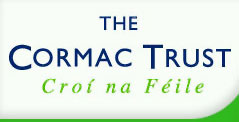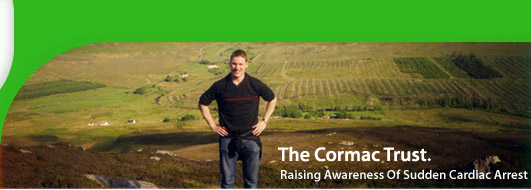Mother of SADS Victim Welcomes RVH Cardiac Health Initiative
A HEARTBROKEN mother who lost her only son to sudden adult death syndrome (Sads) on his 18th birthday has welcomed the creation of a new specialist post to tackle the condition.
Portadown woman Catherine Lyness discovered that her son Stephen had died in his sleep on the morning of his birthday on December 20 2004.
A healthy, outgoing young man, a postmortem examination at a hospital in Belfast was inconclusive.
But three days before Christmas, Catherine was asked if she would permit his heart and brain to be retrieved and examined at a specialist heart hospital in London.
“We were told he had sudden arrhythmic death syndrome, which usually occurs when someone healthy dies from cardiac arrest and there are no heart abnormalities to explain it,” she said.
“It was a very traumatic time for us. Stephen was such an outgoing boy, he never stopped for a minute and was just mad about football. It seemed as if he had crammed so much into his short life.”
Over the next few months Catherine and her husband Geoffrey and their teenage daughters travelled to London for screening.
It would later emerge that Catherine had Buagorda syndrome – a hereditary heart disease that can cause sudden unexpected cardiac death.
Only five other known Buagorda cases exist in the north.
In February Northern Ireland’s first specialist nursing post for genetic heart disease was created at the Royal Victoria Hospital.
Last night a leading consultant cardiologist confirmed that interviews were about to begin for a second specialist post to form part of team investigating inherited cardiac diseases.
This would allow families who have lost loved ones to Sads to be screened in Belfast.
The new nursing post will be funded by the British Heart Foundation for the next three years.
A video-conferencing facility allowing families to communicate with world-class heart specialists in London via video link will also be available at the Royal.
Pascal McKeown, who has been based at the Belfast hospital for the last eight years, said the team hopes to eventually build a database detailing the number of families affected by the syndrome across the north.
He is treating more than 30 families in his clinics.
“We have also been using an NHS genetics laboratory in Oxford to identify a gene within families. Blood samples are sent there and it usually takes four to six months for a result,” he said.
“But there is a 60 per cent chance of finding the gene that can cause sudden death. This represents a big breakthrough as it means we offer specific advice to those have got it.”
Mrs Lyness welcomed the new development and said she hopes it raises awareness for other families.
“We did not have anything like this following Stephen’s death and it can only be a positive development,”
she said.
“I personally feel some type of mandatory screening should be introduced for 12 to 35 year-olds who are physically active, because there are no symptoms at all. Who knows how many young people will die from this terrible condition?”
Today Catherine and 90 others will take part in a charity cycle to raise funds for research into Sads. It will be along the Portadown/Newry towpath.
This is the second year of the cycle, which last year raised £12,000.
“This is my way of helping Stephen and coping with our grief. If more can be done through research to prevent other young people dying it will be something.”
By Seanin Graham, Health Correspondent
(Irish News, 17 June 2006)


